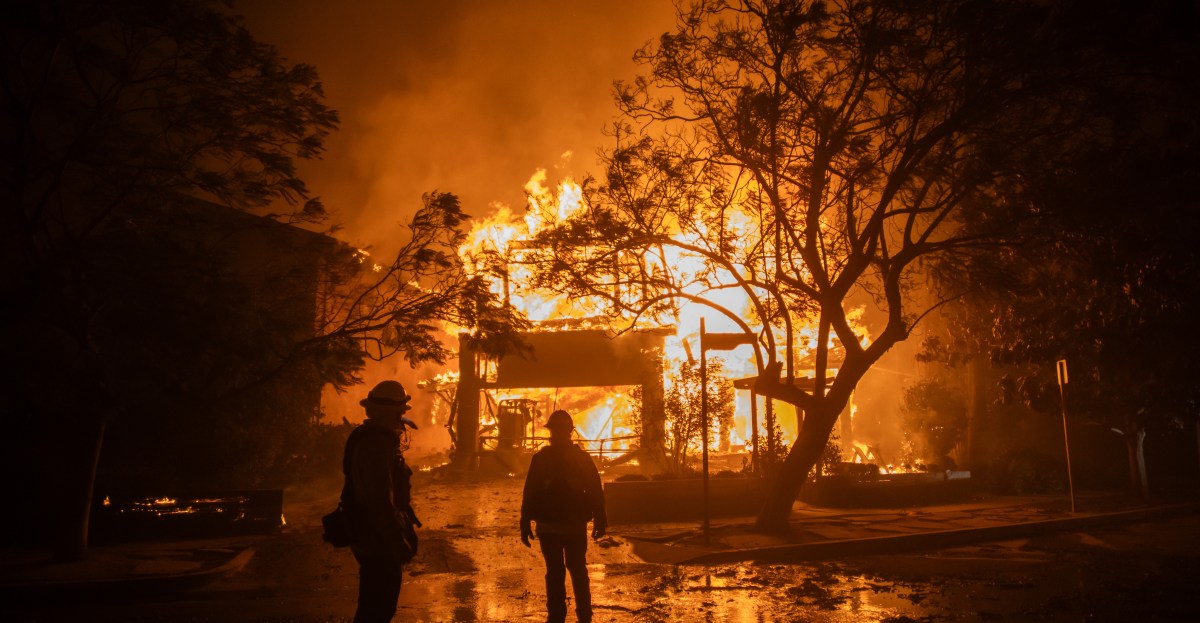Unmasking the Unseen: The Hidden Forces Fueling Los Angeles’ Catastrophic Fires
The wildfires that ravage Los Angeles are not merely the result of an unfortunate natural phenomenon; they are a complex tapestry woven from environmental, climatic, and human factors. As we delve into the intricate dynamics of these catastrophic fires, it becomes clear that understanding these hidden forces is essential for devising effective strategies to combat this growing threat.
Understanding the Environment: A Perfect Storm
Los Angeles is characterized by a unique Mediterranean climate, with its hot, dry summers and mild, wet winters. This climatic pattern, while appealing, creates a volatile environment for wildfires. The dry season, often stretching from late spring to early fall, provides the perfect conditions for fires to ignite and spread rapidly.
- Vegetation: The region’s chaparral and grasslands are rich in oils and other flammable materials, making them highly susceptible to fire.
- Wind Patterns: The Santa Ana winds, which can whip through the canyons at speeds exceeding 60 mph, can turn a small spark into a raging inferno within minutes.
- Drought Conditions: Prolonged periods of drought, exacerbated by climate change, leave vegetation parched and ready to ignite at the slightest provocation.
This environmental setup creates a perfect storm, where the combination of natural elements fosters conditions ripe for wildfires. However, it is essential to recognize that these factors alone do not account for the catastrophic blazes that have plagued the region.
The Climatic Influence: A Changing Landscape
Over the past few decades, the effects of climate change have become increasingly apparent, contributing to the severity and frequency of wildfires in Los Angeles. The rising global temperatures have intensified drought conditions, leading to an increase in the number of days with high fire danger. According to the NASA Earth Observatory, the number of large fires in the Western United States has doubled since the 1980s.
Moreover, the changing climate has altered precipitation patterns. The increased unpredictability of rainfall can lead to both severe droughts and sudden flooding, which in turn creates an unstable environment for vegetation growth. The aftermath often results in an overabundance of dry fuel, ready to combust.
Human Factors: Playing with Fire
While environmental and climatic factors lay the groundwork for wildfires, human activity often acts as the spark. Urban sprawl has increasingly encroached upon wildland areas, creating what is known as the “wildland-urban interface.” Here, homes and infrastructure are dangerously close to highly flammable vegetation.
- Ignition Sources: Many wildfires are ignited by human activities, including campfires left unattended, discarded cigarettes, and even power lines. The California Public Utilities Commission reported that nearly 30% of wildfires were attributed to utility infrastructure failures.
- Land Management Practices: Historical land management practices, including fire suppression strategies, have led to an accumulation of fuels in forests and grasslands. Without controlled burns, which can reduce underbrush, the risk of catastrophic fires increases.
- Climate Change Denial: Some human factors are socio-political, where denial of climate change hinders organized responses to the growing threat of wildfires, delaying necessary policy changes.
These human-induced factors contribute to a volatile situation where natural conditions are exacerbated by our actions. It underscores the urgency of addressing these practices head-on.
Societal Impact: The Human Toll
The repercussions of these wildfires extend far beyond environmental damage—they have a profound impact on local communities. The destruction of homes and infrastructure leaves families displaced and communities fractured. The economic toll is staggering, with estimates suggesting that wildfires cost California billions of dollars annually in firefighting efforts, property damage, and lost productivity.
Moreover, the smoke and pollutants released during wildfires pose significant health risks. According to the Centers for Disease Control and Prevention (CDC), exposure to wildfire smoke can lead to respiratory issues, cardiovascular problems, and other health complications, particularly among vulnerable populations such as the elderly and children.
Urgent Need for Action: Solutions on the Horizon
To combat the devastating impact of wildfires, a multifaceted approach is necessary. Here are some key strategies that can help mitigate this growing threat:
- Improved Land Management: Implementing controlled burns and reducing fuel loads in wildland areas can significantly lower the risk of catastrophic fires.
- Community Preparedness: Educating communities about fire safety and the importance of creating defensible space around homes can reduce fire risk.
- Urban Planning: Adopting smarter urban planning policies that limit development in high-risk areas can help protect both people and natural habitats.
- Climate Action: Addressing climate change through sustainable practices and reducing greenhouse gas emissions is crucial for long-term wildfire prevention.
While the challenge of wildfires in Los Angeles is daunting, there is hope. Community resilience, informed policy-making, and a shift in public awareness can create a proactive culture that prioritizes fire prevention and climate adaptation. By unmasking the unseen forces fueling these catastrophic fires, we can take informed steps to protect our communities, our environment, and our future.
In conclusion, the wildfires in Los Angeles are not just a natural disaster; they are a reflection of complex interactions between environmental, climatic, and human factors. Addressing these issues requires collective action and a commitment to change. It is not too late to act, but the time to do so is now.
See more Your Daily Weather



